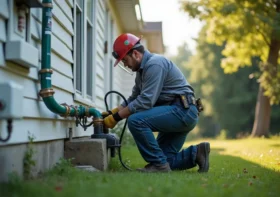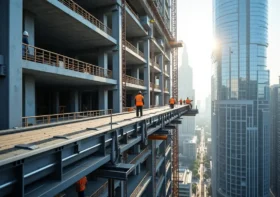Expert Tips for Keeping Your Crawl Space in Top Condition

The crawl space is often one of the most overlooked areas of a home. Hidden beneath the living space, it can be easy to forget about this critical part of the structure. Maintaining your crawl space is crucial for the health of your home and the comfort of its inhabitants.
Neglect can lead to serious issues such as water damage, mold growth, and structural problems, which can be costly to resolve. Understanding how to keep your crawl space in top condition is crucial to ensure its functionality and longevity. In this article, we will explore expert tips that can help homeowners effectively manage their crawl spaces and avoid costly repairs.
Contents
Regular Inspections Are Key
One of the fundamental aspects of maintaining a crawl space is conducting regular inspections. During these inspections, look for signs of water intrusion, mold, or any structural issues that may have developed.
Pay close attention to insulation, as it can sometimes be a telltale sign of excess moisture or pest activity. Documenting any findings will help in managing these issues before they escalate into more significant concerns. Even if you don’t see any obvious problems, keeping an eye out for pests such as termites and rodents is important.
Infestations can cause significant damage to both the structure and the longevity of your home. If you are not comfortable inspecting the crawl space yourself, consider hiring crawl space repair experts who can assess the situation and recommend effective solutions. It’s advisable to check your crawl space at least twice a year, ideally in the spring and fall, when seasonal changes can impact moisture levels.
Control Moisture and Humidity
Moisture control is critical in maintaining a healthy crawl space. High humidity levels can lead to mold growth and attract pests, both of which can compromise the structural integrity of your home. One effective way to control humidity is by ensuring proper ventilation.
Installing vents that allow air to flow can help, but in areas with high humidity, a dehumidifier may be necessary to keep the area dry. According to the Environmental Protection Agency, maintaining indoor humidity levels between 30% and 50% is ideal for preventing mold growth.
Another method for reducing moisture is the use of a vapor barrier, a polyethylene sheet installed on the ground to prevent moisture from seeping upward. A well-sealed vapor barrier can dramatically decrease humidity levels in your crawl space, protecting your home over the long term. During inspections, always check for breaches in your barrier and ensure it is intact, as small holes can allow moisture to enter.
Insulation Matters
Proper insulation in the crawl space can significantly affect the efficiency of your home. Insulation helps in energy savings, and it plays a vital role in temperature regulation. If the insulation is damaged or has become wet, it should be repaired or replaced immediately. Insulating pipes that run through the crawl space is also important to prevent freezing during colder months, which can lead to costly plumbing repairs.
When selecting insulation materials, consider moisture-resistant options, such as closed-cell spray foam. This type of insulation acts as a barrier against moisture, making it ideal for crawl space environments. It’s vital to address insulation issues swiftly to ensure a comfortable living space and prevent unnecessary energy loss.
Manage Drainage Around Your Home
Effective drainage around the exterior of your home can profoundly impact the condition of your crawl space. Ensuring that water flows away from your foundation is vital to preventing water from accumulating under your home. Regularly inspect gutters and downspouts, and make sure they are not clogged and are directing water away effectively. Consider extending downspouts further away from the house to minimize pooling around the foundation.
Landscaping can play a role in drainage. Sloping the ground away from your home creates a natural barrier that guides water away. If you notice that water still collects near your foundation, you might want to consider professional drainage solutions, such as French drains, to alleviate the problem and protect your crawl space.
Seal Vents and Openings
In many homes, crawl spaces have vents that allow for airflow. In particularly humid or damp climates, these vents can open the door for moisture problems. Sealing or closing vents can prevent humid air from entering. There are several ways to seal these vents effectively, including using vent covers that are adjustable depending on the season.
Alongside sealing vents, inspect any entry points where pipes or wiring penetrate the walls of the crawl space. Gaps and cracks around these openings can allow moisture outside and pests inside. A simple application of silicone sealant can go a long way in preventing these problems. By taking this step, you can enhance the protection of your crawl space and ensure that it remains in top condition.
Consider Professional Help When Needed
While many maintenance tasks can be completed by a skilled homeowner, some situations call for professional assistance. If you encounter persistent moisture problems, significant pest infestations, or structural issues, it may be time to consult with local experts in crawl space repairs. Involving professionals can save time, ensure proper procedures are followed, and provide peace of mind.
Proactive management of your crawl space can prevent small issues from becoming significant problems down the road. Regular maintenance, combined with the expertise of crawl space experts, can help maintain the functions of this often-overlooked area of the home. By following these expert tips and maintaining vigilance over your crawl space, you can preserve its condition and extend its life. Protecting your home from the bottom up ensures a comfortable environment for you and your family.



